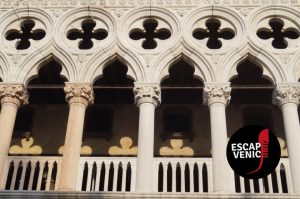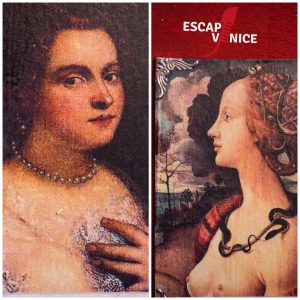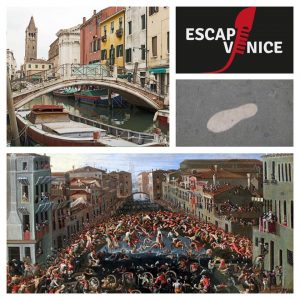
You will think: “Are you vanishing? Trade okay, but the rest?” In truth, in the past Venice, due to the innate commercial spirit of its citizens, has had the ability to bring together in mutual tolerance many representatives of different peoples and cults (Jewish, Turkish, Armic and of different origins), considering them a source of enrichment of its economic, political and cultural heritage. The “strangers” were welcomed regardless of their social class and religious beliefs and took an active part in the life of the city at various levels. Strange, isn’t it? Yes, it sounds strange when we think of modern history.
International trade was the heart of the economic life of Venice and in the city the languages and dialects of the world were heard. Many peoples lived (not only passed through) here. Venice was practically the New York of the 16th century and Rialto was Wall Street. Like modern New York, Venice had the neighborhoods of different peoples: the Jewish ghetto, the Turkish casket, the island of the Armenians, etc. …
Some buildings, called “fondachi” (from Arabic funduq “house-warehouse”) were reserved for the goods and accommodation of foreign merchants. On August 16, 1575, at the request of the Turks, the Venetian Senate decreed to identify a space reserved for them, such as that of the Jews and Germans. In addition, a bazaar and, according to Turkish traditions, a small mosque and Turkish baths were built.
And that’s not all! Venice was the editorial capital, it made the world read. Thanks to the genius of Aldo Manuzio, books were printed in many languages. For several decades Venice became the capital of Jewish publishing: the first Rabbinical Bible (1517) and the first Talmud (1524-25) were printed there, and throughout the seventeenth century the multilingual Haggadot (ritual books for Pesach) printed in Venice went around Europe. And then, if Shakespeare set “The Merchant of Venice” and the events of Bassanio and Shylock in Venice and not elsewhere, there was a reason to be there.
And do you know that the first Koran was also printed in Venice? In 1537-1538 the Paganini, who had seen the business of selling the book in thousands of copies to the Arabs present in the city and beyond, printed for the first time the Koran. The book was believed lost forever and was found only 30 years ago in St. Michael’s island. The book contains many legends and I will tell you about them 😎 in a future post.




